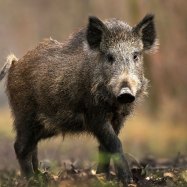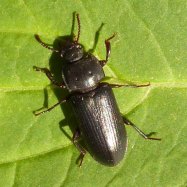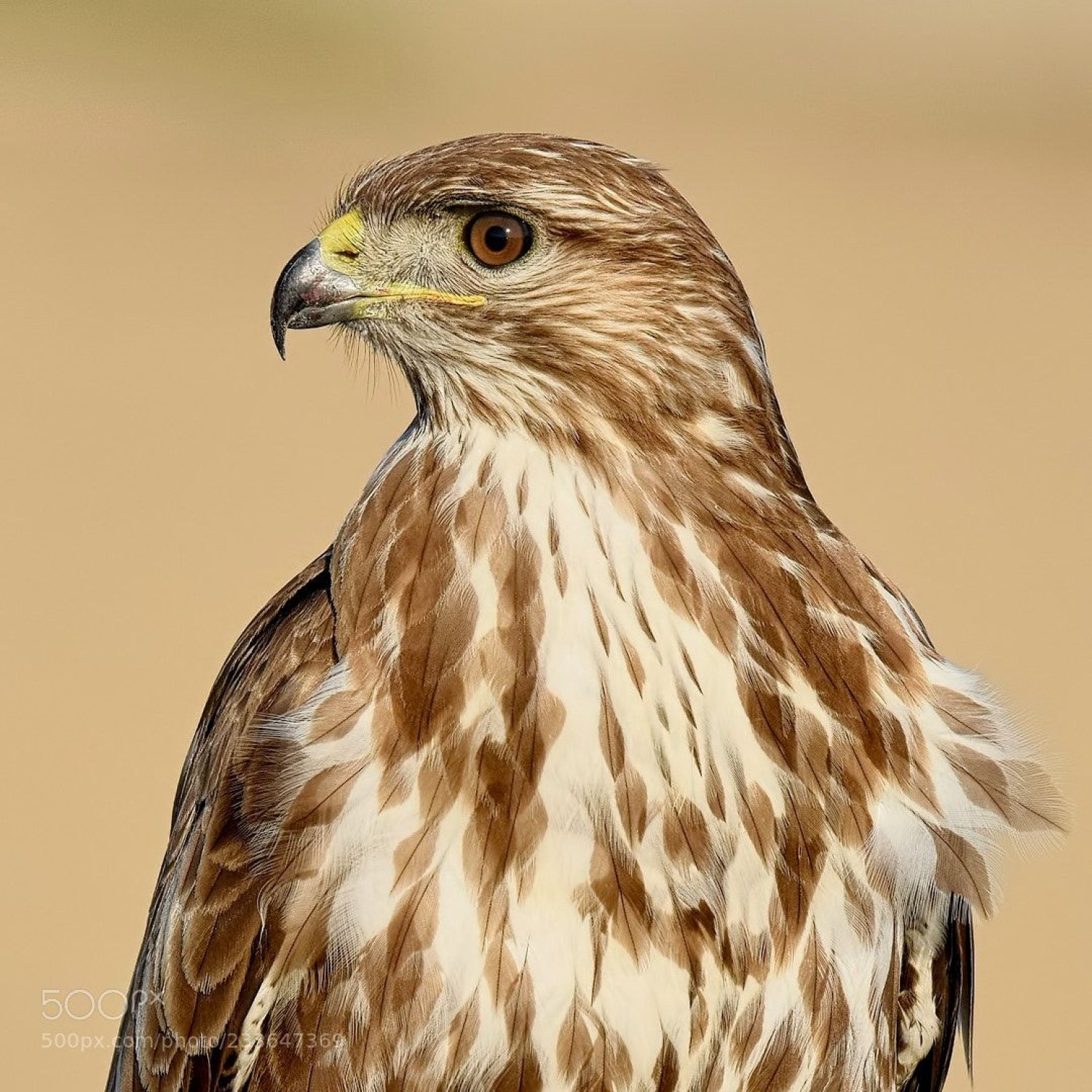
Common Buzzard
51-57 cm
The Common Buzzard is a medium-sized bird of prey found in woodlands, farmland, and open areas. Its scientific name is Buteo buteo, and it belongs to the Accipitridae family. With a length of 51-57 cm, it is a skilled hunter, feeding on small mammals, insects, and reptiles. Despite its name, it is not a picky eater and can even scavenge for food. Keep an eye out for this majestic bird on your next outdoor adventure! #AnimalFacts #BirdWatching #Nature
Animal Details Summary:
Common Name: Common Buzzard
Kingdom: Animalia
Habitat: Woodland, open countryside
The Majestic Common Buzzard: A Medium-Sized Bird of Prey
The common buzzard, scientifically known as Buteo buteo, is a medium-sized bird of prey that belongs to the kingdom Animalia, phylum Chordata, class Aves, order Accipitriformes, and family Accipitridae. This magnificent bird is commonly found in Europe, Asia, and North Africa, and is known by its common name, the common buzzard.The common buzzard is a beautiful bird, with a wingspan of up to 113-128 cm and a body length of 51-57 cm. It has a distinctive body shape, with broad wings and a short, feathery tail Common Buzzard. Its body is covered in feathers that vary in shades of brown, with white patches on the underside. This camouflage makes it easier for them to blend into their surroundings, making them less visible to both prey and predators.
This bird of prey can be found in a variety of habitats, with their favorite being woodland and open countryside. They can also be commonly seen in farmland and open areas, making them a familiar sight for many countryside enthusiasts. Despite being called the common buzzard, they are anything but common in the sense of their beauty and grace.
As a carnivorous animal, the common buzzard feeds on a variety of prey, including small mammals, birds, and reptiles. They are also known to scavenge for food, scavenging on carrion (dead animals) when necessary. They can often be seen soaring high in the sky, using their excellent eyesight to spot potential prey from a distance.
Geographically, the common buzzard can be found in many countries, including the United Kingdom, Germany, Italy, Turkey, and Russia, to name a few Cricket. This widespread distribution is due to their adaptability to various environments and their ability to thrive in different climatic conditions.
In terms of its country of origin, it is difficult to pinpoint a specific country as this bird can be found in multiple countries. However, the oldest recorded common buzzard nest was found in Germany, dating back to 1793, making Germany a strong contender for its country of origin.
Woodland, farmland, and open areas are the primary locations where these birds can be found. This is because these areas provide a plentiful supply of prey, as well as suitable nesting sites. As a solitary bird, the common buzzard prefers to have its own territory, with a nesting site in a tree or on a cliff edge.
One of the most notable features of the common buzzard is its coloration. While the overall color may vary due to genetics, it is commonly seen in shades of brown with white patches. The coloration helps them to blend in with their surroundings, making them less visible to both prey and predators.
The common buzzard is not only beautiful but also has a significant role in the ecosystem. As a top predator, they help to control the population of prey animals, thus maintaining a balance in the ecosystem. They also play a crucial role in cleaning up the environment by scavenging on carrion, preventing the spread of diseases.
Apart from their vital role in the ecosystem, these birds also have other interesting behaviors. During the mating season, they perform an aerial courtship display, where they fly high in the sky, swooping and circling around each other. This display is not only a way to attract a mate but also to establish territories.
Once a pair is formed, the female common buzzard will build a nest using twigs, leaves, and feathers, usually in a tall tree. They lay a clutch of 2-4 eggs and take turns incubating them for around 35 days. After the eggs hatch, both parents are responsible for feeding and caring for their young until they are ready to leave the nest after 6-7 weeks.
Unfortunately, the common buzzard population has faced some challenges in the past due to habitat destruction and human interference. In the early 20th century, they were heavily persecuted and even driven to extinction in some areas due to hunting and pesticide use, which affected their food source.
Thankfully, due to conservation efforts, the common buzzard population has rebounded, and they are now listed as a species of least concern on the International Union for Conservation of Nature (IUCN) Red List. These birds are also protected by law in many countries, which has significantly contributed to their population recovery.
Apart from humans, the common buzzard has a few natural enemies, including larger birds of prey such as the golden eagle and the northern goshawk. However, they are excellent fliers and can easily outmaneuver these predators if needed.
In conclusion, the common buzzard is a majestic and fascinating bird of prey that has adapted to thrive in varying environments. Their role in the ecosystem is crucial, and their beautiful coloration and behaviors make them a delight to observe for nature lovers. With continued conservation efforts, we can ensure the survival of this remarkable bird for generations to come.

Common Buzzard
Animal Details Common Buzzard - Scientific Name: Buteo buteo
- Category: Animals C
- Scientific Name: Buteo buteo
- Common Name: Common Buzzard
- Kingdom: Animalia
- Phylum: Chordata
- Class: Aves
- Order: Accipitriformes
- Family: Accipitridae
- Habitat: Woodland, open countryside
- Feeding Method: Carnivorous
- Geographical Distribution: Europe, Asia, North Africa
- Country of Origin: Multiple countries
- Location: Woodlands, farmland, open areas
- Animal Coloration: Varies, commonly brown and white
- Body Shape: Medium-sized bird of prey
- Length: 51-57 cm
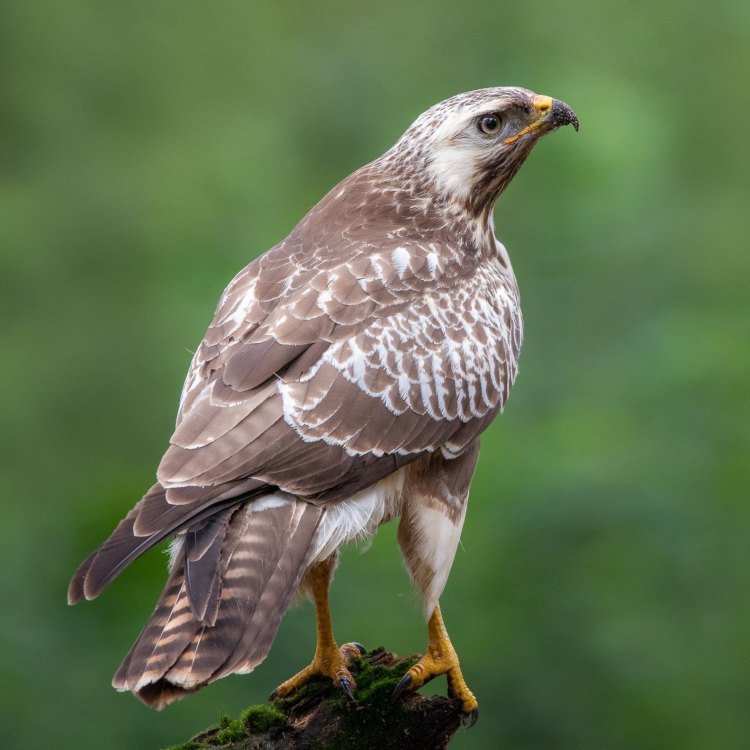
Common Buzzard
- Adult Size: Medium-sized
- Average Lifespan: 10-15 years
- Reproduction: Sexual
- Reproductive Behavior: Monogamous
- Sound or Call: High-pitched whistling sound
- Migration Pattern: Migratory in some populations
- Social Groups: Solitary
- Behavior: Perches on tree branches, hunts from the air
- Threats: Habitat loss, persecution
- Conservation Status: Least Concern
- Impact on Ecosystem: Controls populations of small mammals and birds
- Human Use: Birdwatching, falconry
- Distinctive Features: Broad wings, fan-shaped tail
- Interesting Facts: Most common bird of prey in Europe
- Predator: No natural predators
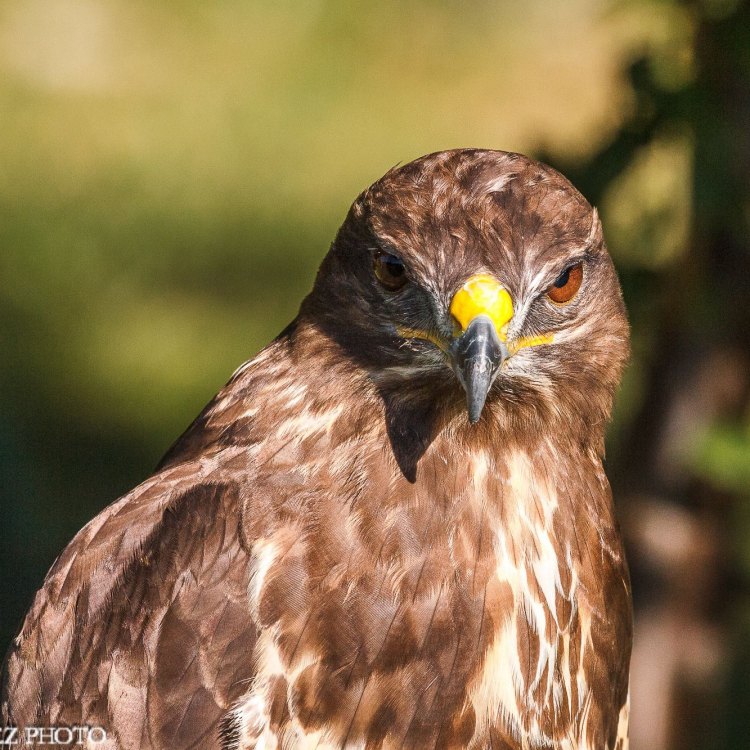
Buteo buteo
The Fascinating World of the Common Buzzard
The world is full of stunning and unique creatures, and one of them is the Common Buzzard. This bird of prey, also known as the Eurasian Buzzard, is a medium-sized raptor with a wide distribution across Europe and parts of Asia. While its name may not be the most exciting, the Common Buzzard has an intriguing story and characteristics that make it stand out in the animal kingdom.Let's dive into the world of the Common Buzzard and learn about its physical traits, behavior, threats, human use, and its impact on the ecosystem PeaceOfAnimals.Com.
The Basics: Size, Lifespan, and Reproduction
The Common Buzzard belongs to the family Accipitridae, which includes a variety of birds of prey such as hawks, eagles, and kites. As a medium-sized raptor, the Common Buzzard typically measures around 45-58 centimeters in length, with a wingspan of 110-130 centimeters. This size makes it easy to spot in the sky, and its distinct features make it even more recognizable.These birds have an average lifespan of 10-15 years in the wild, with some individuals living up to 20 years. They reach sexual maturity at around two years of age and have a reproductive behavior known as sexual, meaning that they require a male and female to reproduce.
Reproduction occurs during the spring, where the male and female Common Buzzard engage in elaborate courtship displays, including spiral dances, aerial acrobatics, and high-pitched calls. Once the female is pregnant, she will build a large nest made of twigs and branches in a tree or cliff ledge, and both parents will take turns incubating the eggs, which usually hatch after 30-35 days.
The World of Monogamy: Reproductive Behavior of the Common Buzzard
While many birds are known for their promiscuous behavior, the Common Buzzard is monogamous, meaning they mate with only one partner for life. This behavior is uncommon in the animal kingdom, making the Common Buzzard a unique species Caterpillar.The monogamous behavior of these birds is evident in their strong bond with their partners, as they often stay together year-round and share the responsibilities of raising their young. This behavior has played a crucial role in the conservation and survival of the Common Buzzard.
Singing Their Song: Sound and Calls of the Common Buzzard
The Common Buzzard is known for its high-pitched whistling sound, which is often described as a "kee-yaaa." This sound is used for communication between birds, especially during mating and territorial displays. It is also used as a locator by young buzzards trying to find their parents.In addition to their whistling sound, Common Buzzards also make a variety of calls, including shrieks, growls, and barks. Each call has a specific meaning, and the birds use them for different reasons, such as alerting other birds of potential prey or signaling danger.
The Great Journey: Migration Patterns of the Common Buzzard
The Common Buzzard is a migratory bird in some populations, meaning that they travel long distances to find food and suitable breeding grounds. The migration patterns of these birds vary depending on their location, with birds in northern Europe migrating to southern Europe and North Africa for the winter, while those in southern Europe may stay put year-round.The Common Buzzard is a solitary bird, meaning they do not migrate in flocks like other bird species. Instead, they travel alone or in small groups, relying on strong winds and thermals to navigate their way.
The Solitary Life: Social Groups and Behavior of the Common Buzzard
As mentioned earlier, the Common Buzzard is a solitary bird, meaning they prefer to hunt, roost, and travel alone. This independent behavior is typical for birds of prey, as they need to protect their territory and resources to survive.One distinctive behavior of the Common Buzzard is that they often perch on tree branches, scanning the ground for potential prey. Once they spot a target, they swoop down, using their sharp talons to catch their prey. They are also known to hunt from the air, using their keen eyesight to spot small mammals and birds from a distance.
Threats to Survival: Habitat Loss and Persecution
The Common Buzzard is classified as a species of Least Concern by the International Union for Conservation of Nature (IUCN), meaning that they are not currently at risk of extinction. However, this does not mean that they are not facing any threats.Habitat loss is one of the main threats to the survival of the Common Buzzard. As humans continue to develop and expand their territories, they often destroy the natural habitat of these birds, leaving them with inadequate resources to survive.
Persecution is another significant threat to the Common Buzzard, as they are often mistaken for their more aggressive and predatory cousins, such as the Golden Eagle and Goshawk. This has led to illegal killings in some areas, impacting the population of these birds.
The Impact of the Common Buzzard on the Ecosystem
While the Common Buzzard may not be considered a top predator, they play a vital role in the ecosystem. As predators, they control populations of small mammals and birds, helping to maintain a healthy balance in the ecosystem.Additionally, the nesting habits of these birds also benefit other bird species, as their large nests provide shelter for smaller birds during the breeding season. This shows how the survival of one species can have a significant impact on the survival of others in the ecosystem.
Partner of Humans: Human Use of the Common Buzzard
The Common Buzzard is often admired and used by humans for various purposes. One of the most popular human uses of these birds is in birdwatching. The ease of spotting them in the sky and their impressive hunting skills make them a favorite among birdwatchers.Another well-known use of the Common Buzzard is in falconry, an ancient practice of hunting with trained birds of prey. These birds are highly valued for their hunting abilities and are often taken from the wild and trained for this purpose. However, laws and regulations are in place to ensure the well-being and conservation of these birds.
Distinctive Features and Interesting Facts about the Common Buzzard
Apart from its wide distribution and monogamous behavior, the Common Buzzard has many distinctive features and interesting facts that make it stand out. One of these features is its broad wings and fan-shaped tail, which allow it to soar and glide effortlessly in the sky.Another interesting fact is that the Common Buzzard is the most common bird of prey in Europe, with an estimated population of around 300,000 to 500,000 breeding pairs. They are also widespread in other parts of the world, such as northern Asia and parts of Africa.
Lastly, this bird of prey has no natural predators, meaning they are on the top of the food chain. Their sharp talons, impressive hunting skills, and solitary behavior make them a formidable predator that is not easily threatened.
The World of the Fascinating Common Buzzard
In conclusion, the Common Buzzard may not be the most talked-about or famous bird of prey, but it certainly has its unique features and behavior that make it stand out in the animal kingdom. From its monogamous nature to its distinctive calls and impact on the ecosystem, this bird has many stories to tell. As humans continue to impact the natural world, it is essential to appreciate and protect these remarkable creatures, including the Common Buzzard. So the next time you see a Common Buzzard soaring high in the sky, take a moment to admire its beauty and reflect on its place in the world.
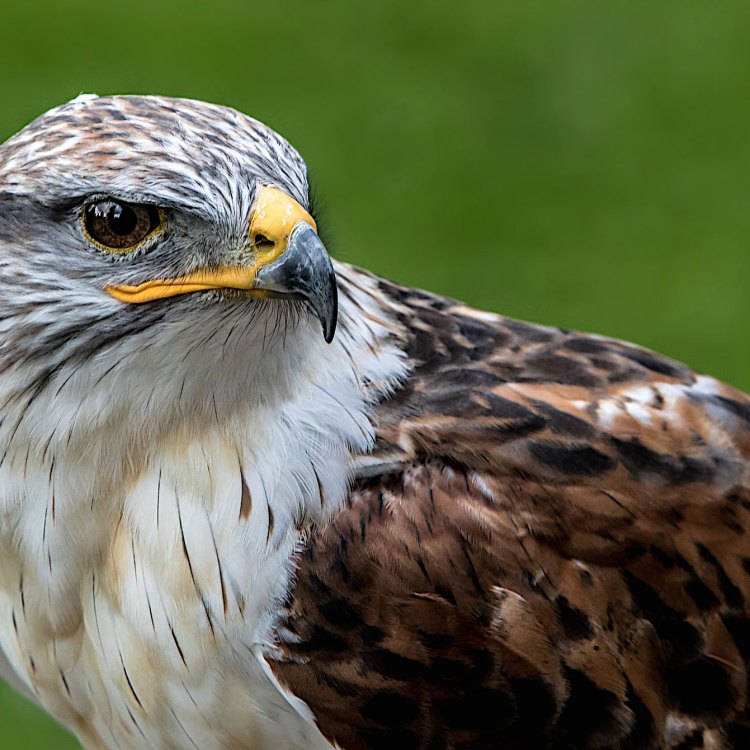
The Majestic Common Buzzard: A Medium-Sized Bird of Prey
Disclaimer: The content provided is for informational purposes only. We cannot guarantee the accuracy of the information on this page 100%. All information provided here may change without prior notice.




